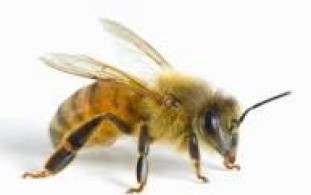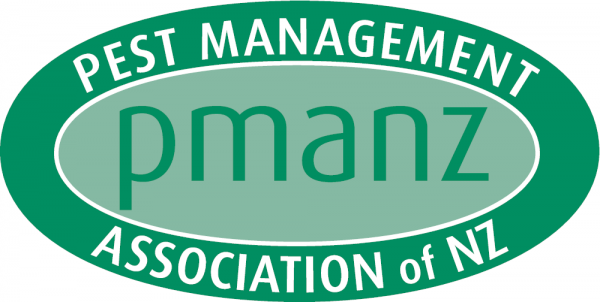Pest Information » Bees
Bees

Introduction:
Bees, hornets and wasps are for the most part a very beneficial group of insects, being the major pollinators of flowering plants, helping to reduce the numbers of many insect pest species, etc. However, of the 54 reported deaths each year from arthropod bites or stings, bees, hornets, and wasps account for about 30 percent.
Bees, hornets, and wasps are categorised as being either solitary or social. Solitary species are those whose members live independently of each other. Social species are those who live together in colonies or nests and which have an adult division of labour or caste system composed of workers, queen(s) and, periodically, males.
the more common solitary groups include the carpenter bees, cicada killers digger wasps mud daubers potter and mason wasps, spider wasps, and velvet ants.
The more common social groups include the bumble bees, honey bees hornets, paper wasps, and yellow jackets.
Recognition:
Body with base of abdomen constricted, sometimes stalked. Wings 4 in number, with front wings a little longer the hind wings; wings with relatively few veins. Antennae moderately long, females are 12-segmented and males 13 segmented. Tarsi 5-segmented. Mouth parts chewing but sometimes with a modified tounge-like sucking structure. Females with well-developed ovipositor modified into a stinger.
In addition, thorax contains a 4th segment, the propodeum, which is actually the basal abdominal fused to the thorax; wings without an accessory vein (extra vein behind anal vein) and hind wing with two or more basal cells.
Identification:
It is necessary to know which group of bees, hornets or wasps you are encountering. Recognition of whether they are solitary or social, and their particular nesting habits is essential for safety and control. It should be noted that there are several other groups of insects which mimic (resemble in appearance and behaviour) some of the bees, hornets, and wasps from protection for potential predators. For example, some of the syrphid flies (Syrphide) strongly resemble honey bees and wasps, some of the robber flies (Asilidae), hawk moths (Sphingidae), and syrphid flies (Syrphidae) strongly resemble bumble bees, some of the clearwing moths (Sesiidae) strongly resemble yellow jackets, some of the thick-headed flies (Sonopidae), clearwing moths (Sesiidae), and beetles (Cerambycidae, Staphylinidae, etc.) mimic wasps, etc. So, do not jump to a quick identification, check the specimen closely.
Biology:
Bees, hornets, and wasps have complete metamorphosis: egg, larva, pupa, and adult. Those which are social have a caste system composed of workers, queen(s), and males (drones). Although the workers are sterile females, they occasionally lay eggs or can sometimes assume reproductive functions if the queen dies. Except for the paper wasps, colonies contain only the founding queen until mid-summer when many queens and males are produced; but honey bees have only one functional queen at a time. With the onset of cold weather, workers, non-inseminated queens, and males die off leaving the inseminated queens to over-winter and start new colonies in the spring. Honey bees are the exception where the entire colony including immatures, workers, and the queen over-winters. In the solitary bees and wasps, only the inseminated queen over-winters.
Adults of social species feed on nectar, honeydew, sap, fruit juices, etc. Protein for larvae comes from pollen for the bees but for the wasps and hornets, it consists of insects and spiders if the adults are predators, or meat if they are scavengers. Workers get some protein but mostly carbohydrates from the trophallactic fluid exuded by the larvae when fed. The larvae of solitary species get all their food from the paralysed prey or pollen ball upon which their egg was laid and which is then usually sealed in a cell.
Bees, hornets and wasps are for the most part a very beneficial group of insects, being the major pollinators of flowering plants, helping to reduce the numbers of many insect pest species, etc. However, of the 54 reported deaths each year from arthropod bites or stings, bees, hornets, and wasps account for about 30 percent.
Bees, hornets, and wasps are categorised as being either solitary or social. Solitary species are those whose members live independently of each other. Social species are those who live together in colonies or nests and which have an adult division of labour or caste system composed of workers, queen(s) and, periodically, males.
the more common solitary groups include the carpenter bees, cicada killers digger wasps mud daubers potter and mason wasps, spider wasps, and velvet ants.
The more common social groups include the bumble bees, honey bees hornets, paper wasps, and yellow jackets.
Recognition:
Body with base of abdomen constricted, sometimes stalked. Wings 4 in number, with front wings a little longer the hind wings; wings with relatively few veins. Antennae moderately long, females are 12-segmented and males 13 segmented. Tarsi 5-segmented. Mouth parts chewing but sometimes with a modified tounge-like sucking structure. Females with well-developed ovipositor modified into a stinger.
In addition, thorax contains a 4th segment, the propodeum, which is actually the basal abdominal fused to the thorax; wings without an accessory vein (extra vein behind anal vein) and hind wing with two or more basal cells.
Identification:
It is necessary to know which group of bees, hornets or wasps you are encountering. Recognition of whether they are solitary or social, and their particular nesting habits is essential for safety and control. It should be noted that there are several other groups of insects which mimic (resemble in appearance and behaviour) some of the bees, hornets, and wasps from protection for potential predators. For example, some of the syrphid flies (Syrphide) strongly resemble honey bees and wasps, some of the robber flies (Asilidae), hawk moths (Sphingidae), and syrphid flies (Syrphidae) strongly resemble bumble bees, some of the clearwing moths (Sesiidae) strongly resemble yellow jackets, some of the thick-headed flies (Sonopidae), clearwing moths (Sesiidae), and beetles (Cerambycidae, Staphylinidae, etc.) mimic wasps, etc. So, do not jump to a quick identification, check the specimen closely.
Biology:
Bees, hornets, and wasps have complete metamorphosis: egg, larva, pupa, and adult. Those which are social have a caste system composed of workers, queen(s), and males (drones). Although the workers are sterile females, they occasionally lay eggs or can sometimes assume reproductive functions if the queen dies. Except for the paper wasps, colonies contain only the founding queen until mid-summer when many queens and males are produced; but honey bees have only one functional queen at a time. With the onset of cold weather, workers, non-inseminated queens, and males die off leaving the inseminated queens to over-winter and start new colonies in the spring. Honey bees are the exception where the entire colony including immatures, workers, and the queen over-winters. In the solitary bees and wasps, only the inseminated queen over-winters.
Adults of social species feed on nectar, honeydew, sap, fruit juices, etc. Protein for larvae comes from pollen for the bees but for the wasps and hornets, it consists of insects and spiders if the adults are predators, or meat if they are scavengers. Workers get some protein but mostly carbohydrates from the trophallactic fluid exuded by the larvae when fed. The larvae of solitary species get all their food from the paralysed prey or pollen ball upon which their egg was laid and which is then usually sealed in a cell.
Related Content
- Code of Practice for the Food Industry
- Using Pesticides Around the Home
- Stay safe when using Poisons around the home
- Advice for Vets about rodenticide poisoning
- Ants
- Bed Bugs
- Bees
- Black Beetle
- Black Field Cricket
- Brown Marmorated Stink Bug
- Click Beetle
- Cluster Flies
- Cockroaches
- Flies
- Mice
- Mosquitoes
- Rats
- Spiders
- Tropical House Cricket
- Wasps
